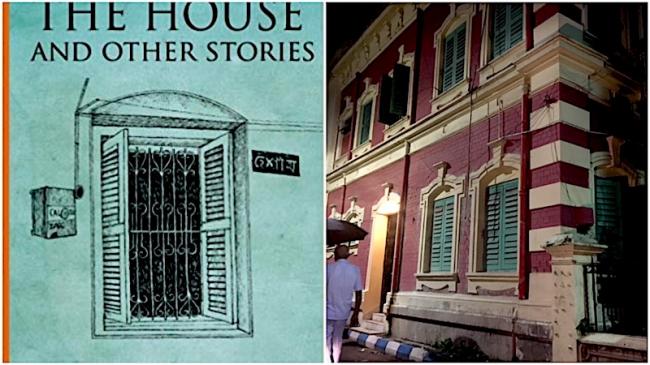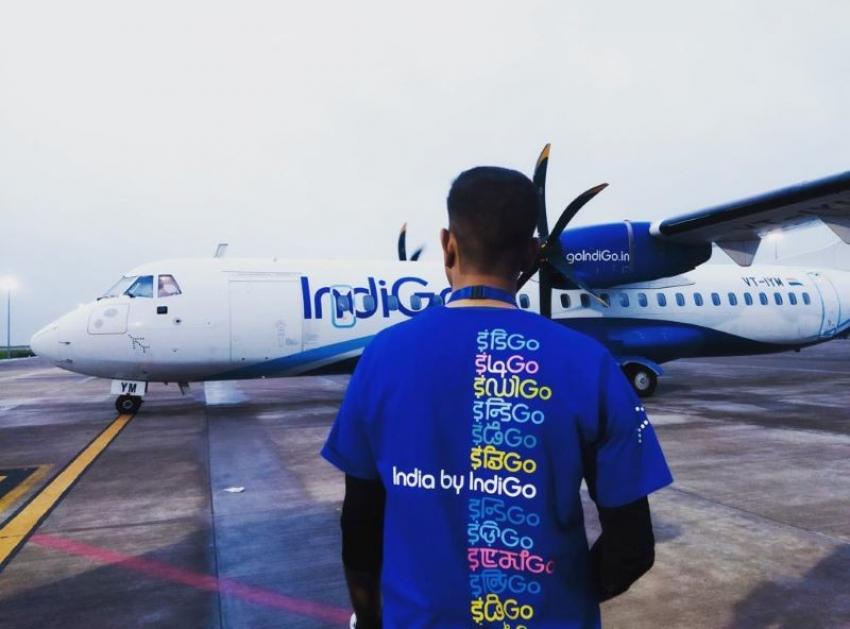Sujoy Dhar | @notintownlive | 08 Nov 2018, 07:03 am

In June 2015, Kolkata, the former British raj capital that slipped into a slow but steady decay over the decades for reasons ranging from retrograde politics, Bengali inertia and a resultant flight of everything from industry to young educated professionals, was in news for a wrong reason.
The bone chilling details of what actually happened inside a house in the city's upscale district left everyone horrified. Police broke into the imposing house on 3 Robinson Street, a prime property in the city's business hub, to find eventually that former software engineer Partha De- who was later found mentally sick- had actually lived there with the skeletons of his sister Debjani and their two dogs for months.
It was the smoke emanating from the house from the charred body of De's father that led to the unfolding of a shivery story of human helplessness before the unforgiving scheme of destiny.
As the charred body of a 77-year-old man, a fully-clothed skeleton of a woman and bags full of bones of their family dogs were recovered, the mansion was quickly christened by media as Kolkata's House of Horrors.
It even triggered a beeline of people gathering at the spot to take selfies against the house that witnessed a tragedy. But few perhaps know what went wrong with the members of the family and why the only living person, 44-year-old Partha De, was in such a state of depression that he lived with a corpse and carcasses for months.
As you are drawn into the first story of the book of former diplomat Amit Dasgupta's The House And Other Stories, the shadow of Robinson Street episode overpowers you as much as the influence of Kafka.
The author, who served in a range of overseas postings from Australia to The Philippines besides stints in Germany, Belgium, Egypt and Nepal, says the book is "about the many person we encounter in the everyday".
But I think it is more appropriate when he says "these are the people we pass by without a second thought". Like former colleagues, neighbours and everyone who knew Partha De or the Robinson Street family were clueless about what went on in their minds.
So our "encounters" every day are not real encounters, because we only see a person on the surface. And because we do not scratch the surface it is perhaps impossible to fathom the inner recess of humans or their thought process or what ails them. But living in the times of no-holds-barred social media presence, some of Dasgupta's characters are both Chekhovian and "larger-than-life" in a different way.
The story that would haunt you for a long time is surely the first one titled Mohua. It seems it was almost inspired by the Robinson Street episode though as a reviewer I do not know if that indeed affected the writer or the idea germinated even before that news broke almost three and half years ago.
Mohua resonates insides me long after I finished the story. Well, as a Kolkata resident since birth but born into middle class milieu I had limited access to the lives and lifestyles of the city's social gentry who lived in those magnificent houses or mansion- now being torn down mindlessly in connivance with politicians trying to rewrite the history of the city with ugly eyesores that neither match up to the glorious and somewhat unique architectural heritage of Kolkata nor the modern day benchmarks in the developed world.
Mohua begins like a "Metamorphosis" redux with the depiction of the life of the narrator of the story- a character as if blended from the world of Kafka and Anton Chekhov- but then through his eyes it unleashes a world very, very different from our times.
But such characters are not entirely unknown and if we look around or even look inside of us, we see the same human possessiveness and stream of thoughts. So the possessive father of the young girl in the story from a different era is not a complete stranger. But the ghostly denouement took me by a little surprise and discomfort too.
The element of magic realism or spookiness notwithstanding- which I took with a spoon of salt- the characters still haunt me and perhaps there lies the success of the storyteller.
The second story The Little Red Book was more relatable and contemporary. The elderly widower (a Bengali bhadralok) missing his late wife Kamala and occasionally visiting his daughter and his German son-in-law and their kid in Berlin is someone we almost know. They are the ones from the quintessentially urban educated upper middle class Bengali milieu, which sometimes I think is an endangered clan now.
As we all try to live in the moments these days, or at least tell ourselves there is no tomorrow, we also think about old age, senility and the countdown to death. So when the protagonist prepares for death over a year believing in some old astrological predictions- almost annihilating his own beliefs of lifetime in science and rationality- we see a reflection of ourselves.
The third story "The House" is one of the most gripping for any Bengali to read though it ended in a rather crude note. There could have been a more subtle ending, but the writer seemed to have pulled the trigger instead of just training the gun on readers.
The story of an elderly Bengali couple of New Delhi's Bengali residential hub CR Park, who lived all their life honourably showering kindness and love and sent their only son to USA for higher studies, resonates with many.
The writer built up the story in layers and episodes of the couple's quiet, dignified and rather picture-perfect life that touch every chord in us and we are reminded of the refinement and self-respect of the bhadralok Bengali of earlier generations that so much earned the community such esteem.
The ending was rather predictable as readers discover the money-mindedness of their son from the beginning, but it still came as a rude shock to the readers with the son's final action. There were many questions that were left unanswered. Though I find it somewhat preachy as it painted characters in complete black and white finally, it deals a blow in the minds of the readers. Dasgupta perhaps did not want to give his readers any room for comfort while narrating the plight of India's elderly and the selfishness of later generations who grew up to only worship money.
The House and Other Stories is a book recommended for all living in these social media-influenced times to get a real taste of life as it unfolds now. But for a Bengali and a Kolkatan, it has a special relevance.
.jpg)
Amit Dasgupta, the author who is now the India Country Director of University of New South Wales- Sydney after a diplomatic career, speaks to IBNS, on what inspired him to write The House and Other Stories
You are a Bengali with strong Kolkata connections though you may have lived in many places as a diplomat. But as we read the book we discover that you are strongly rooted to Bengal and Kolkata:
Ans: I’ve used the spelling Calcutta intentionally. For me, it is Kolkata when I speak in Bangla and Calcutta when I speak or write in English. I’ve grown up in the city and there’s something about Calcutta that never leaves you. It sort of lingers inside you in a good sort of way. Often it is nostalgia because it is so much part of your childhood and growing up years. A time when you loved and lost and learnt to love again. I immensely love Bangla food. It’s comfort food. But then again, the wonderful thing about Calcutta is that it teaches you to love other cultures and cuisines too.
The book cover draws inspiration from old victorian architecture typical of Kolkata.
Ans: Calcutta windows are folklorish. Old crumbling buildings have them. The renovated old buildings have them too. ‘The Calcutta window’ features in one of the stories and it came about during a visit I did and took photographs of the Calcutta windows. When I posted them on Facebook, it brought back a flood of memories for a number of persons. I had, therefore, wanted the cover design to feature a window. The general outline of the cover follows a uniform pattern that the publisher has for the fiction titles. The artist interpreted one of the photographs to do the striking cover.
Your were a career diplomat and now a writer. What other interests you have beyond writing books.
Ans: I am learning painting, am an amateur photographer and, quite modestly, a good cook.
- Birbhum: Sitaramdas Omkarnath Chair at Biswa Bangla Biswavidyalay
- Rotary Club of Calcutta East Central celebrates centenary of iconic actor Santosh Dutta with statue unveiling
- Shiny things by Jinia: A luxury evolution by visionary entrepreneur, healer
- Mystique and Memories: Wiccan Brigade hosts its first Halloween Fest in Kolkata
- Rotary Club of Calcutta Samaritans hosts three-day youth leadership awards program for tribal students in Bakura
- Rotary Club, South Kolkata Vision inaugurate newly developed children's park in Sonarpur
- Akhil Bharat Jaiguru Sampradaya and Omkarnath Mission volunteers care for terminally ill patients at Mahamilan Math hospice
- Bengali couple promoting Indian music and culture among young Americans
- Indi Setu: Wildlife on the Brink: Can We Rewild a Warming World?
- Durga Puja sustainability: One of the oldest awards goes flex-free
Air Canada has introduced a new non-stop route connecting Toronto with Rio de Janeiro, with the first flight landing in the Brazilian city on Friday morning.
Air India, India’s leading global airline, and Maldivian, the national airline of the Maldives, have entered a bilateral interline partnership aimed at boosting connectivity between the two countries.
IndiGo, India’s largest airline, is grappling with one of its most severe operational crises in recent years, with widespread flight delays and cancellations disrupting travel across the country for a second consecutive day.





